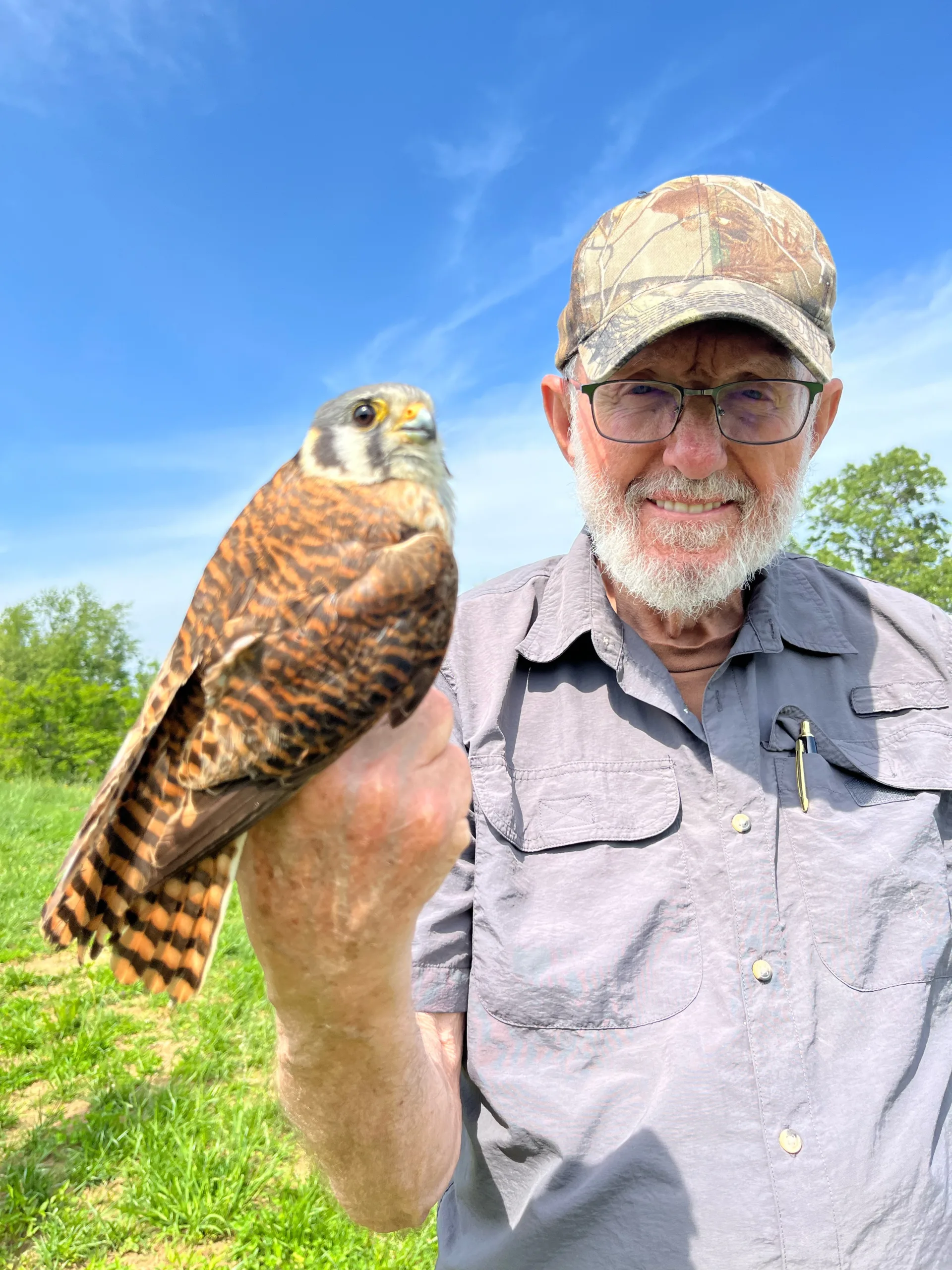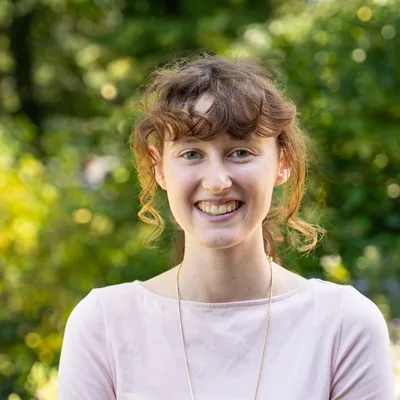The Virginia Piedmont is one of the most breathtaking places in the country, with exceptional natural resources, productive farms and forests, and a landscape steeped in history. Nearly a half-million acres of conserved lands strengthen our quality of life and sense of place and serve as the foundation for well-functioning ecosystems, a strong local food supply, and a refuge for a healthy variety of flora and fauna.
But this region isn’t what it is by chance. It’s taken the careful planning and work of countless people and organizations determined to preserve its beauty and irreplaceable gifts of nature for generations to come. Here, we highlight two of those people, who are protecting the Piedmont with a passion and focus on stemming the decline of our once-abundant grassland birds.
George Gardner, American Kestrel Box Program Volunteer
By Lauria McShane, Virginia Grassland Bird Initiative Assistant
Dedicated volunteer George Gardner can often be found in the picturesque grasslands of Virginia, assisting bird banders and monitoring nest boxes with the Virginia Grassland Bird Initiative (VGBI), a PEC partner initiative along with Smithsonian’s Virginia Working Landscapes, American Farmland Trust and Quail Forever. With the help of volunteers like George, VGBI works with landowners to install nest boxes in farm fields. These allow researchers to band and track adult and fledgling birds for a better understanding of their behaviors as we work to stop the decline of grassland birds in the Piedmont.

George, who lives along Keyser Mountain in Rappahannock County with his wife Cecile and their pointer Brie, first began volunteering with PEC two years ago, planting trees and restoring public habitats with the Rappahannock County Park Natural Resource Committee. But he soon learned about the steep decline in American kestrel populations from research done by The Clifton Institute, Smithsonian’s National Zoo & Conservation Biology Institute, and VGBI. He set his sights in a new direction, adding the nest box program to his long list of volunteer activities.
In spring, George can often be seen climbing ladders to install nest boxes. April through June, he tracks kestrel reproduction progress and keeps a running record of what he finds. “We use a special endoscope camera on a pole extension to look inside the nest box for a clutch of eggs or a kestrel sitting on the eggs or recently hatched nestlings,” he explains. Remembering a particularly exciting week in January, out in the field with VGBI partner and kestrel researcher Alan Williams, George said, “We captured four kestrels for banding, and best of all, also trapped a red tailed hawk, which we also banded. The hawk was especially neat to see and hold!” Last year, George helped the banding team band over 900 birds.
“Being involved with the VGBI program has given me great personal satisfaction in being able to help in a small way to further understand kestrel ecology and to contribute to their reproduction numbers,” George said. He encourages anyone interested in protecting native bird populations to volunteer with VGBI’s nest box program. Visit vagrasslandbirds.org to learn more about the program, volunteering, or participating in VGBI’s nest box program.
Lauria McShane, Virginia Grassland Bird Initiative’s New Staff Member
By Sophia Chapin, Communications Specialist
“As soon as I landed, I fell in love with the fact that we have the mountains, we have trees, we have streams and rivers, and we have communities that care about each other,” says Lauria McShane, PEC’s Virginia Grassland Bird Initiative (VGBI) Assistant who first came to Virginia from California to attend Sweet Briar College in 2019. Since then, Lauria has worked with the James River Association as a riparian buffer steward and at Seven Bends Native Plant Nursery in marketing.
Now, she has stepped firmly into the world of birds, helping landowners in Albemarle, Madison, Greene and Orange counties implement land management practices that protect grassland bird species like the Eastern meadowlark, bobolink, loggerhead shrike, Northern bobwhite, and dozens others. For Lauria, a lot of the joy of her day-to-day comes from fostering relationships to the land. “I first applied to this job because I love working with the connection between people and the environment,” she says.

She also has a keen interest in agriculture, stemming from her days working at Sweet Briar’s greenhouse, gardens and apiary. “Food production is interesting to me because we’re taking something from the land, but there are also ways we can create habitats on those lands to make it a win-win situation,” she explains. The Virginia Grassland Bird Initiative achieves these wins by providing technical support and funding to landowners and producers across 16 counties. For example, its financial incentives program helps farmers pilot rotational grazing practices, which can reduce feed costs to raise cattle while also leaving enough patches of tall grass for grassland birds to successfully nest.
Now that Lauria has settled into her role, she’s looking forward to meeting new faces at upcoming events and through ongoing site visits. “The Charlottesville area has a lot of landowners, a lot of farmers, who are interested in conservation. We just want to get the word out to how they can help. I’m finding that when I get onto landowners’ properties, it’s a very positive experience — they want to give back to their community and their environment, and it gives me a lot of hope for conservation.”
If you’re out and about in Charlottesville, you may catch Lauria on excursions with the Piedmont Bird Club or ambling local trails on her horse Hope.
These profiles appeared in the 2024 spring edition of The Piedmont Environmental Council’s member newsletter, The Piedmont View. If you’d like to become a PEC member or renew your membership, please visit pecva.org/join.
